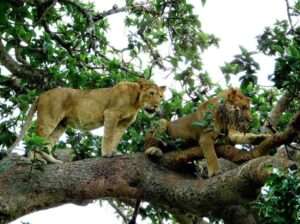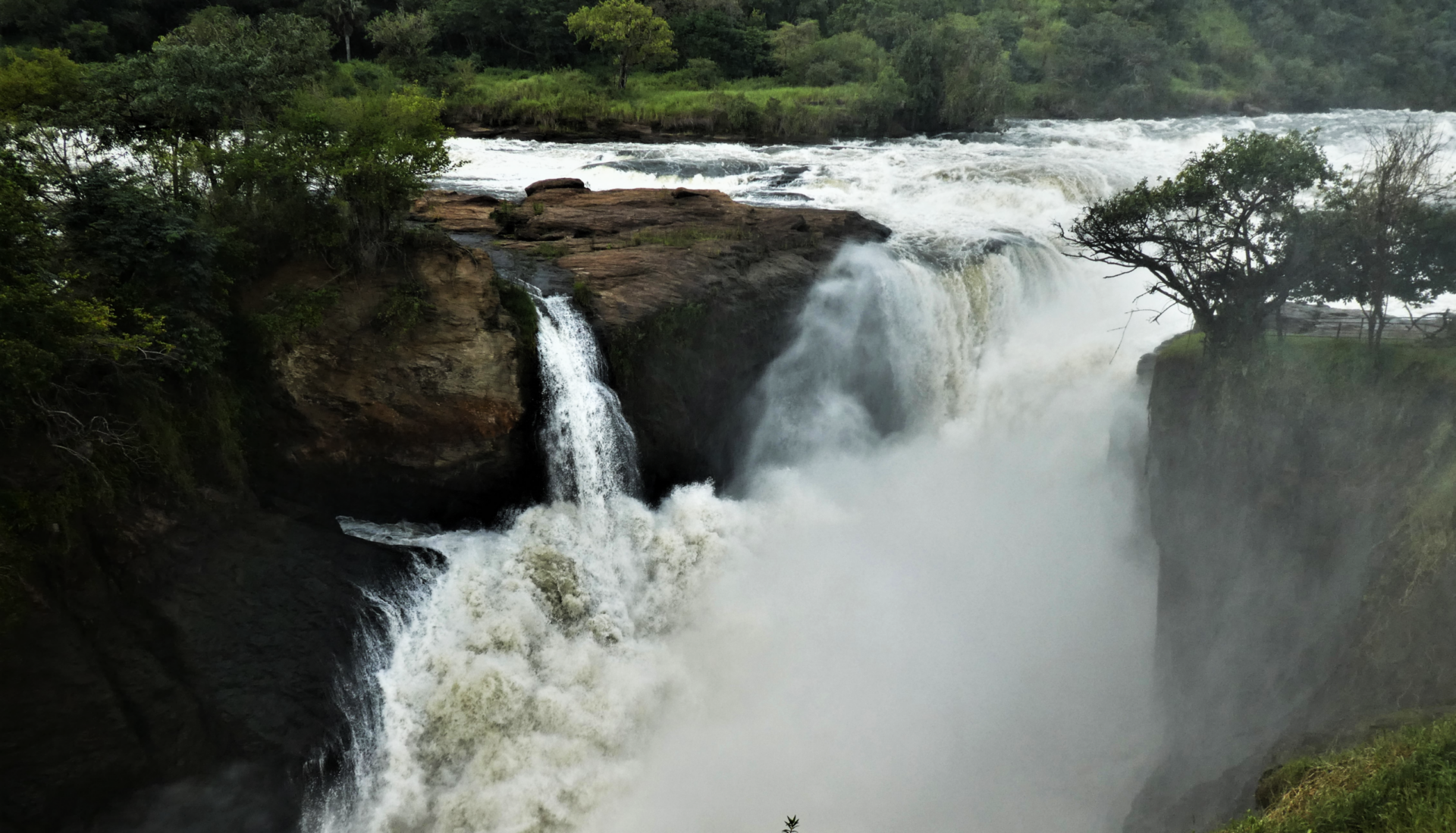As if lions weren’t intimidating enough, did you know you can find tree-climbing lions in East Africa?
Tree-climbing lions are a rare and fascinating phenomenon that has been documented in several African countries, including Uganda. These majestic animals are known for their strength and agility on the ground, but they also have the ability to climb trees with ease. This behavior is most commonly observed in the Ishasha region of Uganda, where lions have been observed resting and even hunting in trees.
While it is not fully understood why these lions climb trees, some theories suggest that it may be a way to escape predators or to take advantage of the cooler temperatures and better visibility offered by the treetops. Whatever the reason, the sight of a lion gracefully climbing a tree is a truly unforgettable experience that showcases the incredible adaptability of these animals.
Want to know more? We’ve gathered some great details about the tree-climbing lions of Ishasha below.
What Makes Tree-Climbing Lions Different From Regular Lions?

You may already know just how powerful lions are as a predator in Africa. Capable of taking down most of the savannah’s wildlife, it’s truly the king.
Tree-climbing lions are like every other lion except for one detail: they climb trees.
Most lions will look for shade at some point during the day to recharge, relax, or keep an eye on potential prey.
For tree-climbing lions, they prefer to have a penthouse view!
Where Are Tree-Climbing Lions Found?
You can find tree-climbing lions in two places: the Ishasha sector of Queen Elizabeth National Park of Uganda and Lake Manyara National Park of Tanzania.
Because Kenya and Uganda are both East African countries, it’s reasonable that these lions are also called the tree-climbing lions of East Africa.
Why Do These Lions Climb Trees?
While there is no exact reason, there are two theories about why tree-climbing lions scale upwards.
One is that they’d like to avoid the bugs and insects on the ground. The other could be to avoid the heat.
These are both guesses, though they are supported by the idea that these tree-climbing lions head back down to the ground during the evening and when it rains, two situations that get rid of bugs, insects, and heat.
What Do Tree-Climbing Lions Do In Trees?

Apart from keeping cool and eating bugs, tree-climbing lions may also use this vantage point to keep a watchful eye on grazing wildlife, like antelope, buffaloes, the Uganda kob, and other speedy snacks.
What Kind Of Trees Do They Climb?
If you have the chance to visit these lions in Ishasha in the Queen Elizabeth National Park, you’ll see them lounging in acacia trees.
At first, you may not even notice them. Their skin and the color of the surroundings tends to match, so it’s best to go with a guide to see where these napping big cats are hanging out.
Are Tree-Climbing Lions Endangered?
Tree-climbing lions do face threats from humans. A few years ago, many were found dead as a result of poisoning, while others face risks from poaching, hunting and illegal wildlife trade.
How Can You Support Tree-Climbing Lions With Your Visit
Conservation has to involve all stakeholders, from the local communities who must deal with lions on their lands, to the government and its park rangers, to tour operators and the tourists themselves. Have a chat with your Uganda tour specialist and learn how they’re connected with these various groups and how your travel will impact the area. When we all take responsibility, we will see better conservation outcomes.
Come See The Tree-Climbing Lions of Uganda
As specialists in Uganda safaris, we would be happy to take you to Queen Elizabeth National Park so you can see the tree-climbing lions for yourself.
While you’re there, you’ll also experience some of East Africa’s best birding, be able to track chimpanzees, and, of course, meet some of the warmest people.
It would be an honor to help plan your next Uganda safari itinerary. As tour providers operating in Uganda and throughout East Africa since 2013, we have the experience and connections to develop a trip that you’ll remember for a lifetime. Feel free to send us a message to start your planning today.











